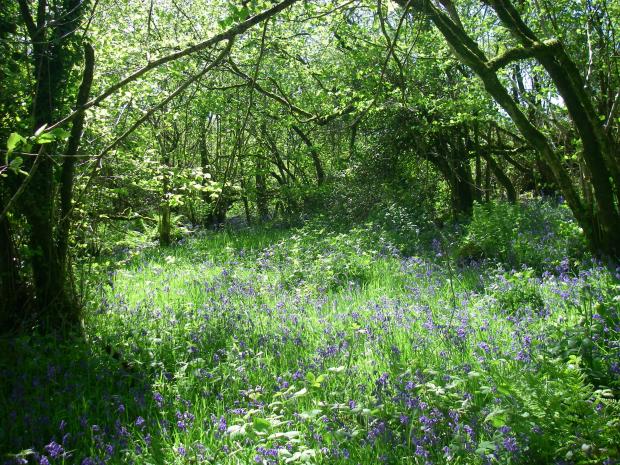
Bond's Glen is special because of its range of woodland types, which occur in an unbroken sequence rising from the valley floor up on to the slopes.
This range within a woodland is now very rare in Northern Ireland. Due to this variability the glen has a rich assemblage of woodland plants, including a number of rare species e.g. the parasitic plant toothwort and the grass wood fescue.
The broad valley floor is wet and partly flooded near to the stream. These wet areas support fen meadow vegetation with plants such as marsh-marigold, bogbean, bottle sedge and marsh cinquefoil. There is also an area of goat willow dominated wet woodland.
The lower slope of the valley is wet and occasionally waterlogged with the associated wet woodland comprised of alder, ash and downy birch. The ground flora is characterised by stands of female-fern, meadowsweet and opposite-leaved golden-saxifrage.
Further up the slope are pockets of ash woodland with a dense shrub layer of hazel. The woodland floor here supports a lush ground flora of bluebell, wood anemone and lesser celandine.
Towards the top of the valley side the woodland becomes more mature with stands of sessile oak, ash and downy birch, and a shrub layer of hazel, rowan, holly and hawthorn. The woodland floor consists of a thick carpet of great wood-rush, bilberry, bluebell and wood sorrel.
Related articles
- ASSI Guidance for Public Bodies/Competent Authorities
- Coastal Areas of Special Scientific Interest
- Conservation Management Plans (CMPs)
- European Marine Sites - Marine Special Areas of Conservation and Special Protection Areas
- Introduction to Conservation Management Plans (CMPs) for Northern Ireland’s Special Areas of Conservation
- Marine Conservation Zones
- Marine Protected Areas
- Marine Ramsar sites
- Portrush Coastal Zone
- Special Areas of Conservation
- Special Areas of Conservation for Harbour porpoise
- Special Protection Areas
